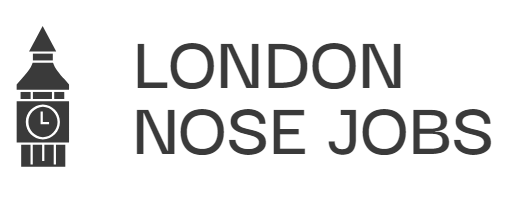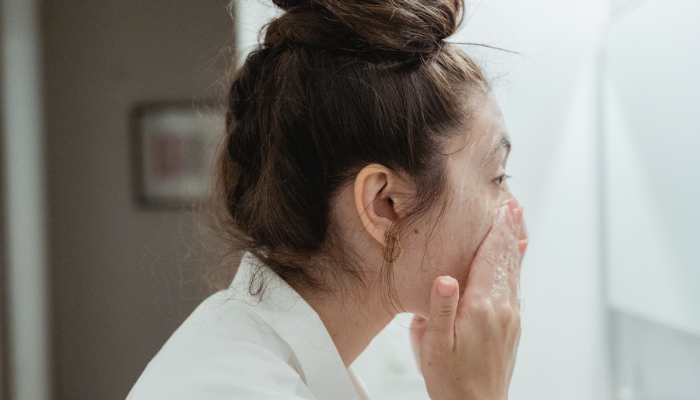Have you ever looked in the mirror and thought about changing your nose without going through surgery? You’re definitely not alone. More and more folks are turning to non-surgical options to tweak their noses.
It’s all about making small adjustments without the downtime that comes with traditional surgery. In this article, we’ll take a look at how non-surgical nose jobs work, what to expect, and whether they’re the right choice for you.
Key Takeaways
-
Non-surgical nose jobs use fillers to reshape the nose without surgery.
-
The procedure is quick, often completed in under an hour.
-
Results can last from a few months to a couple of years, depending on the filler used.
-
While generally safe, there are some risks and side effects to consider.
-
Choosing a qualified practitioner is key to achieving the best results.
Understanding Non-Surgical Nose Jobs
What Is a Non-Surgical Nose Job?
Basically, it’s a cosmetic procedure where dermal fillers are injected into your nose to reshape it. Think of it as contouring, but with injectables. It’s a non-permanent way to address minor imperfections without going under the knife.
It’s also called a ‘liquid nose job‘ sometimes. It can fix things like bumps, a droopy tip, or asymmetry. It’s not going to make your nose smaller, but it can make it look straighter or more balanced with the rest of your face.
Benefits of Non-Surgical Nose Jobs
Why are people choosing this over surgery? Well, there are a few good reasons:
-
It’s quicker: The procedure itself usually takes less than half an hour.
-
Less downtime: You can usually go back to your normal activities right away.
-
Lower risk: No general anaesthesia or incisions mean fewer potential complications.
-
Reversible: If you don’t like the results, the filler can be dissolved.
-
More affordable: Generally, it’s cheaper than traditional rhinoplasty.
It’s important to remember that while the risks are lower, they’re not zero. Always go to a qualified practitioner.
Who Is a Good Candidate?
Not everyone is a perfect fit for a non-surgical nose job. It works best for people who want to correct minor issues, like a small bump on the bridge of their nose or a slightly droopy tip. If you’re looking for a dramatic change or need structural work done, surgery is probably a better option.
Also, good candidates should:
-
Have realistic expectations about what can be achieved.
-
Be in good overall health.
-
Not have any active skin infections in the treatment area.
-
Understand the temporary nature of the results.
Here’s a quick guide:
|
Feature |
Non-Surgical Nose Job |
Surgical Rhinoplasty |
|---|---|---|
|
Bump Reduction |
Yes |
Yes |
|
Tip Lift |
Yes |
Yes |
|
Size Reduction |
No |
Yes |
|
Structural Work |
No |
Yes |
|
Recovery Time |
Minimal |
Significant |
|
Result Longevity |
Temporary |
Permanent |
The Procedure Explained
What Happens During the Treatment?
First off, you’ll have a consultation where you discuss your goals with the practitioner. They’ll assess your nose and face to determine the best approach.
On the day of the treatment, the area will be cleaned, and a topical anaesthetic cream is usually applied to minimise any discomfort. This numbing cream needs about 15-20 minutes to work its magic. Then, using a fine needle or cannula, the practitioner will inject the chosen filler into specific points on your nose.
It’s all about strategic placement to smooth out bumps, lift the tip, or add definition. The whole thing usually takes about 15 to 45 minutes, depending on the complexity of the changes you want to make.
Types of Fillers Used
When it comes to non-surgical nose jobs, the type of filler used is pretty important. Hyaluronic acid (HA) fillers are the most common choice. Why? Because they’re temporary and can be dissolved if you’re not happy with the results.
HA fillers work by adding volume under the skin, which helps to reshape the nose. Other types of fillers, like calcium hydroxylapatite (Radiesse), are sometimes used, but they’re less common for noses because they’re not dissolvable. Your practitioner will discuss the best option for you based on your individual needs and desired outcome.
Expected Duration of the Procedure
The great thing about non-surgical nose jobs is that they’re pretty quick. From start to finish, you’re usually looking at around 30 to 60 minutes. This includes the time for the numbing cream to take effect, the actual injection process, and a quick check-up afterwards.
Here’s a rough breakdown:
-
Consultation (if not already done): 15 minutes
-
Numbing: 15-20 minutes
-
Injections: 10-20 minutes
-
Post-treatment check: 5 minutes
It’s often called a “lunchtime procedure” because you can literally get it done during your lunch break and head back to work. Of course, it’s always best to factor in a bit of extra time, just in case. And remember, everyone’s different, so the exact duration can vary.
Results and Expectations

What Results Can You Expect?
It’s good to have realistic expectations. This procedure is fantastic for subtle enhancements, like smoothing out a dorsal hump or lifting the tip of your nose. It’s not going to give you the dramatic changes of a full rhinoplasty, but it can definitely refine your appearance. You might notice:
-
A more symmetrical nose
-
A smoother profile
-
A more balanced facial appearance
It’s important to remember that fillers add volume. So, while we can correct some imperfections, we’re not actually removing anything. It’s all about creating the illusion of a more refined shape.
How Long Do Results Last?
Typically, you’re looking at anywhere between 9 months and 2 years. It really depends on the type of filler used and how quickly your body metabolises it. Here’s a rough guide:
|
Filler Type |
Average Duration |
|---|---|
|
Hyaluronic Acid |
9-18 months |
|
Calcium Hydroxylapatite |
12-24 months |
Factors Influencing Longevity
Several things can affect how long your results stick around. It’s not an exact science, unfortunately.
Here’s what to keep in mind:
-
Metabolism: Some people just break down fillers faster than others. It’s genetics, really.
-
Filler Type: As mentioned above, different fillers last different amounts of time.
-
Lifestyle: Things like intense exercise or frequent sun exposure might speed up the breakdown of fillers, but more research is needed on that.
-
Injection Technique: A skilled practitioner will know how to place the filler for optimal results and longevity. Choosing the right practitioner is key!
Safety and Risks Involved
Alright, let’s talk about the less glamorous side of non-surgical nose jobs: the potential risks. It’s easy to get caught up in the excitement of a quick fix, but it’s important to be aware of what could go wrong.
No procedure is entirely without risk, and this one is no exception. However, most of the risks can be minimised by choosing a qualified practitioner and following aftercare instructions carefully.
Common Side Effects
So, what can you expect in terms of common side effects? Well, most people experience some degree of redness, swelling, or bruising at the injection site. It’s pretty normal and usually fades within a few days. You might also feel some tenderness or mild pain. These are all generally considered mild and temporary.
Think of it like a little nudge to your nose – it needs a bit of time to settle down. Here’s a quick rundown:
-
Redness at the injection site
-
Mild swelling
-
Bruising
-
Tenderness or mild pain
Potential Complications
Now, let’s get into the more serious, but less common, complications. While rare, these can include:
-
Vascular occlusion: This is when the filler blocks a blood vessel, which can lead to tissue damage or, in very rare cases, vision problems. This is why it’s so important to choose a practitioner who really knows their stuff about facial anatomy.
-
Infection: Any time you break the skin, there’s a risk of infection. Your practitioner should use sterile techniques to minimise this risk.
-
Allergic reaction: Although uncommon, some people may have an allergic reaction to the filler itself.
-
Skin necrosis: This is tissue death, and it’s a very rare but serious complication that can occur if blood supply is compromised.
It’s worth noting that the risk of serious complications is low, especially when the procedure is performed by an experienced and qualified professional. However, it’s always better to be informed and prepared.
How to Minimise Risks
Okay, so how do you make sure you’re doing everything you can to minimise these risks? Here are a few key things:
-
-
-
-
Do your research: Find a practitioner who is properly qualified, experienced, and has a good reputation. Don’t be afraid to ask about their training and experience with non-surgical nose jobs.
-
-
-
-
Be honest about your medical history: Tell your practitioner about any allergies, medical conditions, or medications you’re taking. This will help them assess whether the procedure is right for you and take any necessary precautions.
-
Follow aftercare instructions carefully: Your practitioner will give you specific instructions on how to care for your nose after the procedure. Follow these instructions to the letter to help prevent complications and promote healing.
-
Don’t be afraid to speak up: If you experience any unusual symptoms after the procedure, such as severe pain, swelling, or vision changes, contact your practitioner immediately.
Comparing Non-Surgical and Surgical Options
Choosing between a non-surgical nose job and traditional rhinoplasty can feel like a big decision. Both options aim to improve the appearance of your nose, but they differ significantly in terms of procedure, results, and recovery.
Let’s break down the key differences to help you make an informed choice.
Key Differences Between Procedures
The most obvious difference is that one involves surgery, and the other doesn’t! A non-surgical nose job uses dermal fillers to reshape the nose. It’s a minimally invasive procedure with no incisions.
On the other hand, surgical rhinoplasty involves reshaping the bone and cartilage of the nose to achieve more dramatic and permanent results. The choice really depends on the extent of change you’re after.
Here’s a quick comparison:
|
Feature |
Non-Surgical Nose Job |
Surgical Rhinoplasty |
|---|---|---|
|
Invasiveness |
Minimally invasive |
Invasive |
|
Incisions |
No incisions |
Incisions required |
|
Anaesthesia |
Local anaesthetic usually |
General or local anaesthetic |
|
Downtime |
Minimal (few days) |
Significant (several weeks) |
|
Results |
Subtle, temporary |
More dramatic, potentially permanent |
|
Cost |
Lower |
Higher |
When to Choose Surgery
Surgery is generally the better option if you’re looking for significant and permanent changes to the size or shape of your nose. For example, if you need to correct breathing problems, fix a severely crooked nose, or dramatically reduce the size of your nose, then surgical rhinoplasty is likely the way to go.
It’s also worth considering if you’ve had a non-surgical nose job before and are happy with the results, but want a more permanent solution.
Surgical rhinoplasty offers a wider range of possibilities for reshaping the nose, but it also comes with greater risks and a longer recovery period. It’s important to have realistic expectations and discuss your goals thoroughly with a qualified surgeon.
Cost Considerations
Cost is a significant factor for many people. Non-surgical nose jobs are generally much cheaper than surgical rhinoplasty. The exact cost of a surgical rhinoplasty can vary widely depending on the complexity of the procedure, the surgeon’s fees, and hospital costs.
Non-surgical options typically range from a few hundred to a thousand pounds, while surgical rhinoplasty can easily cost several thousand. Remember to factor in the cost of consultations, aftercare, and potential revisions when making your decision.
Post-Treatment Care
Now, it’s time to make sure you look after your new nose to get the best possible results. It’s not just about the procedure itself, but also what you do afterwards that really counts. Let’s dive into how to care for your nose after the treatment.
Immediate Aftercare Tips
Right after the procedure, there are a few things you should keep in mind. The first 24-48 hours are the most important for ensuring a smooth recovery.
-
Avoid touching or applying pressure to the treated area. I know it’s tempting to poke and prod, but resist! This helps prevent the filler from shifting.
-
Apply a cold compress gently to reduce swelling and bruising. Think of it like icing a sprained ancle – it helps keep things calm.
-
Skip strenuous exercise for at least 24 hours. Give your body a chance to recover without added stress.
-
Avoid extreme temperatures, like saunas or very hot showers. These can affect the filler.
Long-Term Care for Best Results
Looking after your nose in the long run is key to maintaining those lovely results. It’s not a one-off thing; it’s more like a lifestyle change.
-
Protect your skin from excessive sun exposure. UV rays can damage the skin and potentially affect the filler. Sunscreen is your friend!
-
Stay hydrated. Drinking plenty of water keeps your skin plump and healthy, which can help the filler look its best.
-
Consider gentle facial massages (as advised by your practitioner). This can help maintain the filler’s shape and prevent lumps.
-
Schedule follow-up appointments with your practitioner. They can assess the results and advise on any further care.
Signs to Watch For After Treatment
While non-surgical nose jobs are generally safe, it’s important to be aware of potential issues. Knowing what to look out for means you can act quickly if something isn’t quite right.
-
Excessive pain or swelling that doesn’t subside after a few days. This could indicate an infection or other complication.
-
Changes in skin colour, such as unusual paleness or discolouration. This could be a sign of vascular compromise, which needs immediate attention.
-
Any signs of infection, like pus or increased redness. Don’t ignore these – get them checked out.
-
Sudden vision changes. Although rare, this is a serious symptom that requires immediate medical attention.
If you experience any of these signs, contact your practitioner immediately. It’s always better to be safe than sorry. Early intervention can prevent minor issues from becoming major problems.
Finding a Qualified Practitioner
Choosing the right practitioner for a non-surgical nose job is really important. You want someone who knows what they’re doing, understands your goals, and can keep you safe. It’s not just about finding the cheapest option; it’s about finding someone you can trust with your face.
What to Look for in a Practitioner
First off, look for someone with specific training in cosmetic injectables. A general medical degree isn’t enough; they need to have done courses and workshops focused on fillers and facial anatomy. Experience is key too. How many non-surgical nose jobs have they done?
Ask to see before-and-after photos of their previous clients – this will give you a good idea of their skill and aesthetic sense.
Also, check their registration with professional bodies. In the UK, look for registration with the General Medical Council (GMC) or the Nursing and Midwifery Council (NMC), depending on their profession. This ensures they meet certain standards of training and practise.
Questions to Ask During Consultation
Don’t be shy about asking questions during your consultation. This is your chance to get all the info you need to make an informed decision. Here are a few ideas:
-
What type of filler do you recommend for my nose, and why?
-
What are the potential risks and side effects?
-
How long have you been performing non-surgical nose jobs?
-
Can I see before-and-after photos of your previous patients?
-
What is your plan for managing any complications that might arise?
It’s also a good idea to ask about their approach to aftercare. A good practitioner will provide detailed instructions on what to do (and what not to do) after the procedure to ensure the best possible results and minimise the risk of complications.
Conclusion
Credentials and experience are non-negotiable when it comes to cosmetic procedures. You’re not just buying a product; you’re entrusting someone with your appearance and well-being. A practitioner with proper credentials has undergone the necessary training to perform the procedure safely and effectively. Experience means they’ve seen a variety of cases and know how to handle different situations.
Take the time to explore your options, do your research, and choose a practitioner who aligns with your needs and values. A little extra effort now can lead to greater confidence and better results. Many clinics offer a free consultation—an ideal first step to help you feel informed and comfortable moving forward.
Frequently Asked Questions
What is a non-surgical nose job?
A non-surgical nose job, also known as a liquid nose job, is a cosmetic procedure that uses fillers to change the shape of the nose without surgery.
How long do the results last?
The results of a non-surgical nose job usually last between six months to two years, depending on the type of filler used.
Is the procedure painful?
Most people find the procedure to be quick and relatively painless, as numbing cream is often applied before the injections.
Who is a good candidate for this treatment?
Good candidates are usually those looking for minor adjustments to their nose, such as smoothing bumps or enhancing the tip.
Are there any risks involved?
Like any medical procedure, there are risks, including swelling, bruising, or allergic reactions, but serious complications are rare.
How much does a non-surgical nose job cost?
The cost can vary widely, but it typically ranges from £300 to £700, depending on the practitioner and location.






